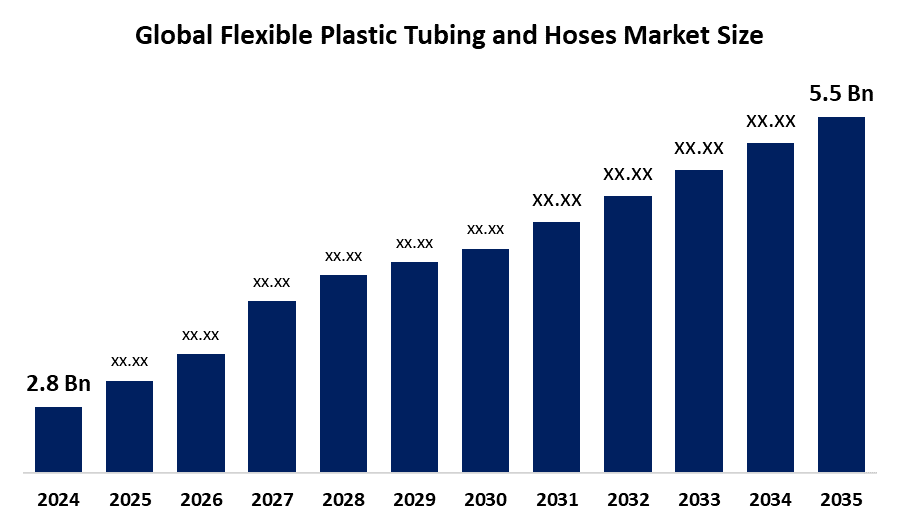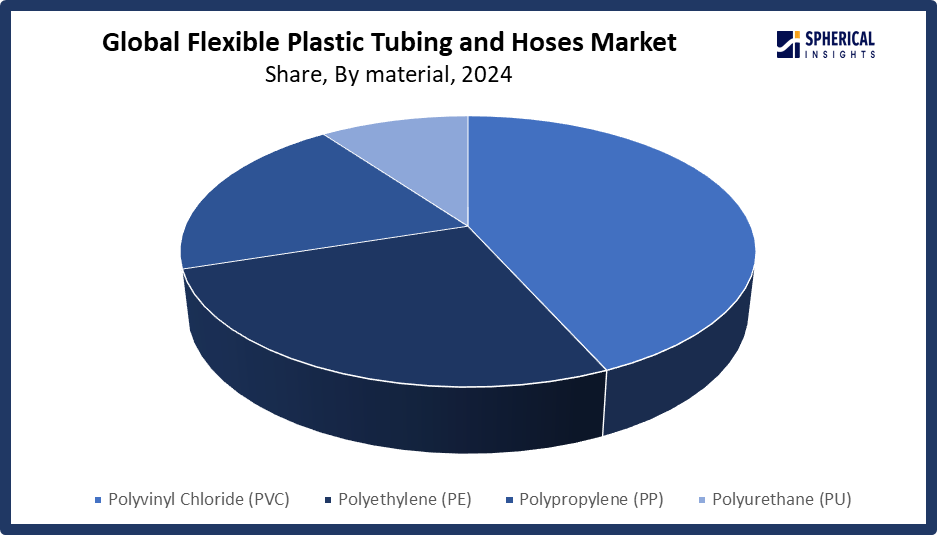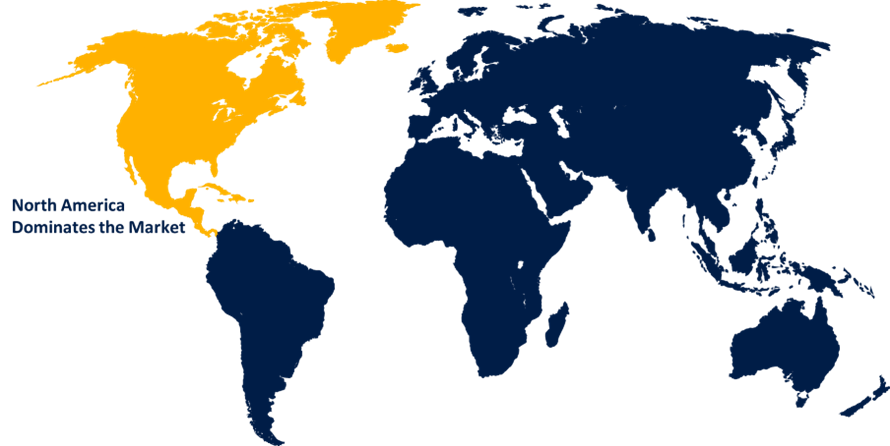Global Flexible Plastic Tubing and Hoses Market Size, Share, and COVID-19 Impact Analysis, By Material (Polyvinyl Chloride (PVC), Polyethylene (PE), Polypropylene (PP), and Polyurethane (PU)), By Application (Automotive, Agriculture, Medical and Pharmaceutical, and Industrial Manufacturing), and By Region (North America, Europe, Asia-Pacific, Latin America, Middle East, and Africa), Analysis and Forecast 2025 - 2035
Industry: Chemicals & MaterialsGlobal Flexible Plastic Tubing and Hoses Market Insights Forecasts to 2035
- The Global Flexible Plastic Tubing and Hoses Market Size Was Estimated at USD 2.8 Billion in 2024
- The Market Size is Expected to Grow at a CAGR of around 6.33% from 2025 to 2035
- The Worldwide Flexible Plastic Tubing and Hoses Market Size is Expected to Reach USD 5.5 Billion by 2035
- Asia Pacific is expected to grow the fastest during the forecast period.

Get more details on this report -
According to a research report published by Spherical Insights and Consulting, The Global Flexible Plastic Tubing and Hoses Market Size was worth around USD 2.8 Billion in 2024 and is predicted to grow to around USD 5.5 Billion by 2035 with a compound annual growth rate (CAGR) of 6.33% from 2025 and 2035. The market for flexible plastic tubing and hoses has a number of opportunities to grow due to the growing need for corrosion resistant, lightweight fluid transfer solutions in the automotive, healthcare, and agricultural sectors. While global infrastructure development and irrigation expansion drive higher unit volumes, improved polymer and extrusion technologies expand the potential applications.
Report Coverage
This research report categorizes the flexible plastic tubing and hoses market based on various segments and regions, forecasts revenue growth, and analyzes trends in each submarket. The report analyses the key growth drivers, opportunities, and challenges influencing the flexible plastic tubing and hoses market. Recent market developments and competitive strategies such as expansion, type launch, development, partnership, merger, and acquisition have been included to draw the competitive landscape in the market. The report strategically identifies and profiles the key market players and analyses their core competencies in each sub-segment of the flexible plastic tubing and hoses market.
Flexible Plastic Tubing and Hoses Market Report Coverage
| Report Coverage | Details |
|---|---|
| Base Year: | 2024 |
| Market Size in 2024: | USD 2.8 Billion |
| Forecast Period: | 2025-2035 |
| Forecast Period CAGR 2025-2035 : | 6.33% |
| 2035 Value Projection: | USD 5.5 Billion |
| Historical Data for: | 2020-2023 |
| No. of Pages: | 220 |
| Tables, Charts & Figures: | 121 |
| Segments covered: | By Material and By Region |
| Pitfalls & Challenges: | COVID-19 Impact, Challenges, Future, Growth, & Analysis |
Get more details on this report -
Driving Factors
The flexible plastic tubing and hoses market is driven by the chemical industry is a key component of the global economy, propelling innovation in industries such as agriculture and medicine. Almost all goods and processes rely on the creation of base materials, such as chemicals, polymers, and specialized compounds. Since they guarantee raw resources for consumer goods, construction, and manufacturing, businesses in this industry are key participants in supply chains. The industry is spending more on green chemistry and circular economy projects in an effort to lessen its environmental impact, with an emphasis on sustainability. Technological developments, market need for more creative and sustainable solutions, and regulatory compliance will all drive this industry's continued growth, making it vibrant and a major player in the corporate world.
Restraining Factors
The flexible plastic tubing and hoses market is restricted by factors like price volatility for raw materials, particularly petroleum based polymers like PVC and PE. Additionally, manufacturers are investing substantially in reformulation and compliance procedures due to growing regulatory pressure regarding plastic waste and material safety, which further raises costs.
Market Segmentation
The flexible plastic tubing and hoses market share is classified into material and application.
- The polyvinyl chloride (PVC) segment dominated the market in 2024, accounting for approximately 43% and is projected to grow at a substantial CAGR during the forecast period.
Based on the material, the flexible plastic tubing and hoses market is divided into polyvinyl chloride (PVC), polyethylene (PE), polypropylene (PP), and polyurethane (PU). Among these, the polyvinyl chloride (PVC) segment dominated the market in 2024 and is projected to grow at a substantial CAGR during the forecast period. The segment driven by PVC is the industry standard because of its low cost, resistance to chemicals, and adaptability to a wide range of industrial, medical, and agricultural uses. Because of its ubiquitous availability, ease of fabrication, and adaptability for a range of fluid transfer demands, adoption is anticipated to remain strong. Ongoing advancements in flexibility and durability are also anticipated to spur more growth.

Get more details on this report -
- The automotive segment accounted for the largest share in 2024, accounting for approximately 20% and is anticipated to grow at a significant CAGR during the forecast period.
Based on the application, the flexible plastic tubing and hoses market is divided into automotive, agriculture, medical and pharmaceutical, and industrial manufacturing. Among these, the automotive segment accounted for the largest share in 2024 and is anticipated to grow at a significant CAGR during the forecast period. The dominance is due to the substantial usage of flexible tubing and hoses in fuel systems, cooling systems, and air management. Increased vehicle production, a growing emphasis on lightweight and durable materials, and developments in heat and chemical resistant tubes are all predicted to contribute to continued high use.
Regional Segment Analysis of the Flexible Plastic Tubing and Hoses Market
- North America (U.S., Canada, Mexico)
- Europe (Germany, France, U.K., Italy, Spain, Rest of Europe)
- Asia-Pacific (China, Japan, India, Rest of APAC)
- South America (Brazil and the Rest of South America)
- The Middle East and Africa (UAE, South Africa, Rest of MEA)
North America is anticipated to hold the largest share, representing nearly 30% of the flexible plastic tubing and hoses market over the predicted timeframe.

Get more details on this report -
North America is anticipated to hold the largest share, representing nearly 30% of the flexible plastic tubing and hoses market over the predicted timeframe. In the North America market, the is rising due to the The market is expected to be dominated by North America because to its robust industrial, healthcare, and automotive industries. The desire for high quality, long lasting tubing and hoses, increased infrastructure development, and technical improvements are all predicted to support continued high adoption, and regulatory focus on safety and material requirements is likely to encourage further expansion.
Asia Pacific is expected to grow at a rapid CAGR, representing nearly 7.3% in the flexible plastic tubing and hoses market during the forecast period. The Asia Pacific area has a thriving market for flexible plastic tubing and hoses because of the fast industrialization, urbanization, and expanding automotive and healthcare industries. Asia-Pacific is predicted to experience robust growth, especially in China, India, and Japan. Increased demand for high performance tubing and hoses, increased manufacturing facilities, and increasing infrastructure development are all expected to encourage adoption, and local production capabilities are probably going to spur additional expansion.
Europe is expanding significantly due to the expansion of its healthcare infrastructure, automobile manufacturing, and industrial automation. Demand for long-lasting and chemical resistant materials, stricter safety and environmental requirements, and growing use of modern manufacturing techniques are all predicted to promote increased utilization, while advancements in flexible tubing solutions are anticipated to support market growth.
Competitive Analysis:
The report offers the appropriate analysis of the key organizations/companies involved within the flexible plastic tubing and hoses market, along with a comparative evaluation primarily based on their type of offering, business overviews, geographic presence, enterprise strategies, segment market share, and SWOT analysis. The report also provides an elaborative analysis focusing on the current news and developments of the companies, which includes type development, innovations, joint ventures, partnerships, mergers & acquisitions, strategic alliances, and others. This allows for the evaluation of the overall competition within the market.
Market Segment
This study forecasts revenue at global, regional, and country levels from 2020 to 2035. Spherical Insights has segmented the flexible plastic tubing and hoses market based on the below-mentioned segments:
Global Flexible Plastic Tubing and Hoses
Global Flexible Plastic Tubing and Hoses Market, By Material
- Polyvinyl Chloride (PVC)
- Polyethylene (PE)
- Polypropylene (PP)
- Polyurethane (PU)
Global Flexible Plastic Tubing and Hoses Market, By Application
- Automotive
- Agriculture
- Medical and Pharmaceutical
- Industrial Manufacturing
Global Flexible Plastic Tubing and Hoses Market, By Regional Analysis
- North America
- US
- Canada
- Mexico
- Europe
- Germany
- UK
- France
- Italy
- Spain
- Russia
- Rest of Europe
- Asia Pacific
- China
- Japan
- India
- South Korea
- Australia
- Rest of Asia Pacific
- South America
- Brazil
- Argentina
- Rest of South America
- Middle East & Africa
- UAE
- Saudi Arabia
- Qatar
- South Africa
- Rest of the Middle East & Africa
Frequently Asked Questions (FAQ)
-
1. What is the CAGR of the flexible plastic tubing and hoses market over the forecast period?The global flexible plastic tubing and hoses market is projected to expand at a CAGR of 6.33% during the forecast period.
-
2. What is the market size of the flexible plastic tubing and hoses market?The global flexible plastic tubing and hoses market size is expected to grow from USD 2.8 Billion in 2024 to USD 5.5 Billion by 2035, at a CAGR of 6.33% during the forecast period 2025-2035.
-
3. Which region holds the largest share of the flexible plastic tubing and hoses market?North America is anticipated to hold the largest share of the Flexible Plastic Tubing and Hoses market over the predicted timeframe.
-
4. Who are the top 15 companies operating in the global flexible plastic tubing and hoses market?Parker Hannifin Corporation, Eaton Corporation, Gates Corporation, Saint Gobain Performance Plastics, Kuriyama of America, Inc., Trelleborg AB, Continental AG, Hutchinson SA, Smiths Group plc, Colex International Ltd., Polyconn, NewAge Industries, Inc., Flexaust Inc., Masterflex SE, NORRES Schlauchtechnik GmbH, and Others.
-
5. What factors are driving the growth of the flexible plastic tubing and hoses market?The flexible plastic tubing and hoses market growth is driven by robust demand in several important industries, including the growing need for lightweight, long lasting fluid transfer systems in the automobile industry and the quick expansion of the pharmaceutical and medical industries, which demand high-performance tubes.
-
6. What are market trends in the flexible plastic tubing and hoses market?The flexible plastic tubing and hoses market trends include material innovation & high performance polymers, sustainability & recycling focus, growth of medical, automotive & agricultural applications, smart manufacturing & embedded technology tubing, and customization and diversification of distribution channels.
-
7. What are the main challenges restricting wider adoption of the flexible plastic tubing and hoses market?The flexible plastic tubing and hoses market trends include that manufacturers have to control fluctuating raw material costs, particularly for polymers derived from petroleum, which reduces margins and makes pricing strategies more difficult.
Need help to buy this report?